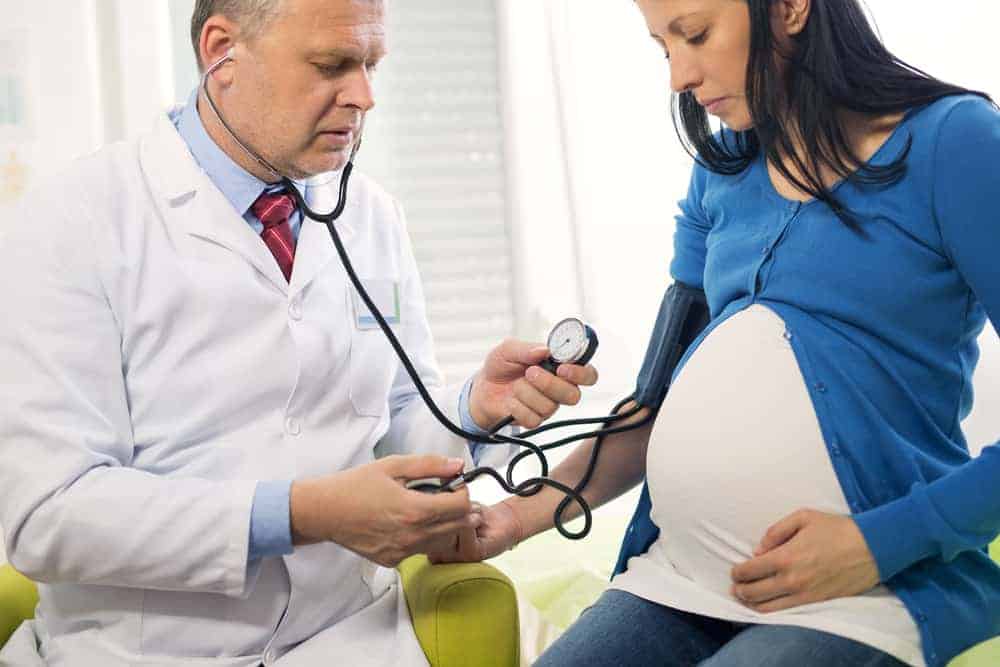Pregnancy comes with a range of surprises, but no one expects pre-eclampsia – a condition that can be life-threatening and develop during pregnancy. This hypertensive disorder affects up to eight percent of all pregnant mothers worldwide yearly, usually after around 20 weeks of gestation. But when does pre-eclampsia start in pregnancy? In this blog post, we’ll explore the early signs, risk factors, and treatment options for this serious medical issue so you can stay informed about your health throughout your journey into motherhood.
What are the early sign and symptoms of pre-eclampsia?
Pre-eclampsia affects about five to eight percent of all pregnancies and can be very serious. It often presents before the twentieth week of pregnancy but can also develop up to six weeks after delivery. Early signs and symptoms of pre-eclampsia can include sudden weight gain, high blood pressure, swelling of the legs and face, headaches, dizziness, and vision changes, such as seeing spots. You must contact your doctor immediately if you experience these symptoms while pregnant. Left untreated, pre-eclampsia can lead to serious complications for both the mother and the baby.
What are the risk factors of pre-eclampsia?
Risk factors for pre-eclampsia include age, weight, and prior health history. Specifically, women older than 40, with a BMI greater than 30 and a history of hypertension or diabetes before pregnancy, are at an increased risk for developing pre-eclampsia. Other factors, such as being pregnant with multiple babies, having previously experienced pre-eclampsia in prior pregnancies, or being pregnant due to assisted reproductive technologies, may also increase risk. Additionally, while not proven in all studies, a family or medical history of pre-eclampsia can increase your risk of developing the condition during your pregnancy. Therefore, talking to your healthcare provider about your full medical history when planning or discussing pregnancy is important.
When Does Pre-eclampsia Usually Start During Pregnancy?
Pre-eclampsia usually arises after 20 weeks of pregnancy and is classified as either early or late pre-eclampsia. Early pre-eclampsia is generally benign but signals the need for close monitoring by healthcare professionals. Late pre-eclampsia, however, may cause more severe complications and even be life-threatening if not monitored closely or treated promptly. Women with a history of high blood pressure are particularly at risk for developing both early and late pre-eclampsia when pregnant. Routine maternal health screenings throughout pregnancy will help identify potential issues and ensure that appropriate medical intervention is taken, if necessary.
How is Pre-eclampsia diagnosed?
Pre-eclampsia is usually diagnosed during prenatal visits, as healthcare practitioners regularly test for blood pressure and proteinuria, the two main indicators that indicate this condition. It is now recommended that urine tests for proteinuria occur during each patient’s prenatal visits during their second trimester and beyond. Other factors like edema (swelling) and potential organ damage may sometimes be monitored in addition to signs such as abdominal or shoulder pain, nausea, and sudden weight gain – all of which could point to pre-eclampsia. Upon further testing, confirming a diagnosis of pre-eclampsia requires elevated levels of both blood pressure and proteinuria following at least two separate readings taken at least six hours apart. Healthcare providers can only recommend additional steps to manage the condition successfully after this confirmation.
How to treat Pre-eclampsia?
Treatment commonly involves careful monitoring of the mother’s health throughout her pregnancy but may also involve early delivery of the baby if threatened by Pre-eclampsia. In certain cases, medications may be used as well. It is important for pregnant women with pre-eclampsia or at risk for pre-eclampsia to be vigilant about self-care so that medical professionals can quickly identify any changes in their health during pregnancy to avoid potential problems. This includes following advice from medical professionals regarding diet and exercise, rest and stress management practices, regular urine tests, and blood pressure measurements. All these work together to provide valuable insight into the development of pre-eclampsia and reduce the severity or consequences should a complication arise.
Pre-eclampsia treatment at Lotus Medical Centre, Brunswick VIC, Australia
Although you may not have experienced pre-eclampsia, it is still something that could potentially affect your pregnancy. If you think that you or your child are at risk for this condition, then make sure to see a doctor as soon as possible. With early detection and proper medical care, you can help ensure a healthy pregnancy for you and your baby.
If you have any questions, reach out to us Lotus Medical Centre.

